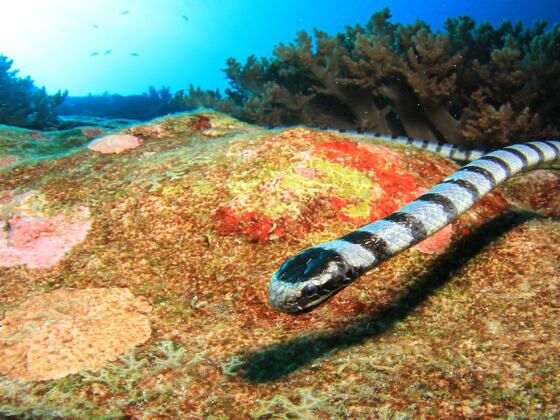This Philippines is home to some of the most diverse wildlife on the planet, but that’s not always a comforting thing for travelers. Going snorkeling and seeing a sea snake, for example, is a surprise wildlife encounter that might not exactly be thrilling. That’s exactly what happened to Emmy Phillips, who got accidentally up close and personal with a sea snake while swimming in the Philippines.


Watch a Snorkeler Get Up Close and Personal With a Sea Snake in the Philippines
@matadornetwork Too close for comfort 😬 @Emily Phillips ♬ original sound – Matador | Travel + Adventure
What are sea snakes?
Sea snakes in the Philippines belong to the family Elapidae, which also includes cobras and coral snakes. They have evolved several unique features that allow them to thrive in their aquatic environment. For instance, their flattened tails help them swim more efficiently, while their nostrils have developed valves to prevent water from entering their lungs. Their body scales are also smaller and more tightly arranged, providing a better grip on slippery surfaces.
The Philippines is home to a variety of sea snake species, each with its own characteristics and behaviors. The Yellow-lipped Sea Krait (Laticauda colubrina) is one of the most common species found in the country. This highly venomous snake has a striking appearance, characterized by alternating black and bluish-white bands along its body. Another interesting species is the Banded Sea Snake (Hydrophis cyanocinctus), which is known for its bright yellow bands and aggressive nature.
Are they actually dangerous?
Despite their potentially lethal venom, sea snakes in the Philippines are generally not considered a significant threat to humans. Most species are timid and prefer to avoid confrontation. However, it’s still essential to exercise caution while swimming or diving in their habitat, as some species can be more aggressive when they feel threatened. In the rare event of a bite, immediate medical attention is vital to minimize the risk of severe complications.
Sea snakes in the Philippines actually face a wide range of threats, including habitat degradation, pollution, and overfishing. The destruction of their coral reef habitats due to illegal fishing practices, such as dynamite fishing, has led to a decline in their populations. Climate change also poses a significant challenge, as rising sea temperatures can lead to coral bleaching and the eventual loss of vital habitats.